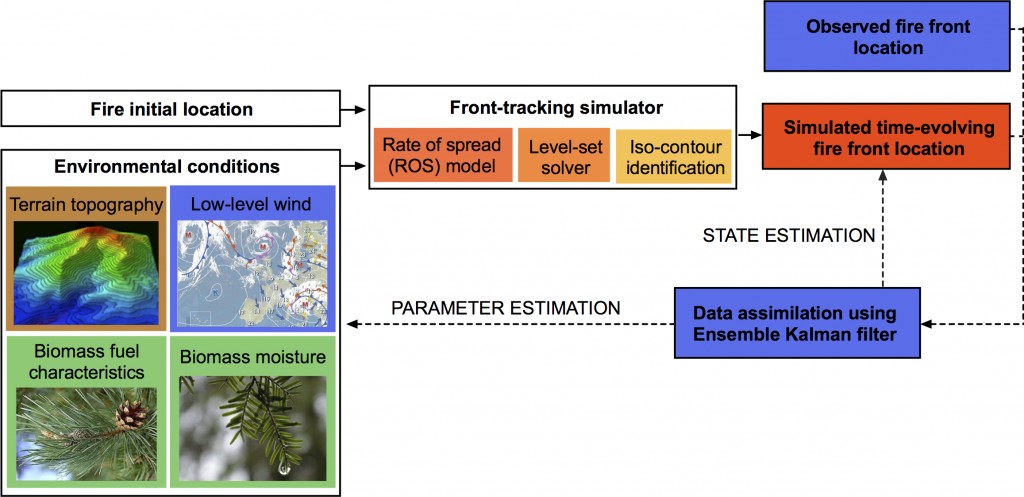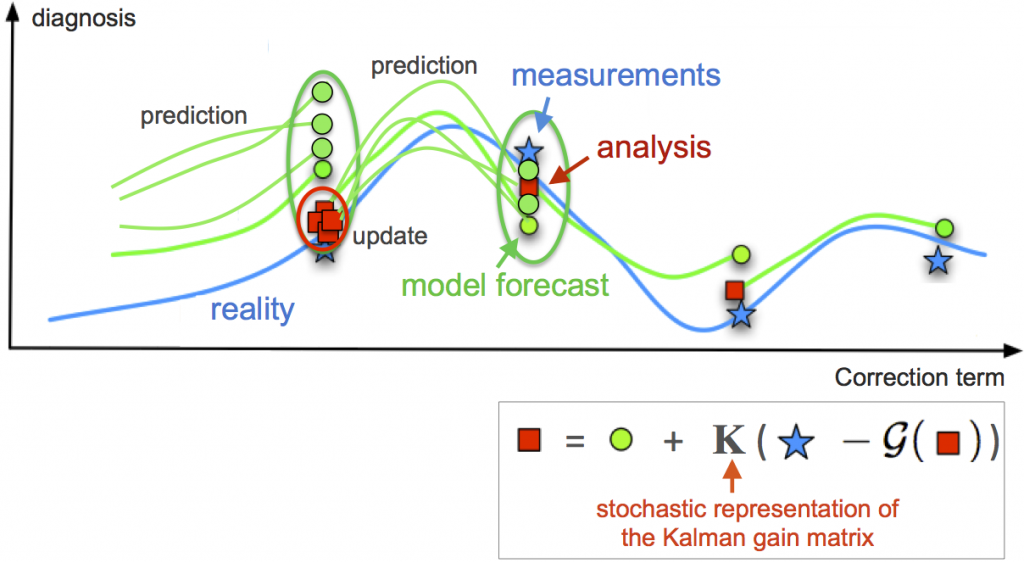FireFly simulates wildfire spread scenarios at regional scales. An inverse modeling strategy is applied based on the assimilation of the fire front location. The idea underlying the ensemble Kalman filter (EnKF) strategy is to translate the differences in the observed and simulated fire front locations into a correction of the environmental parameters (ex: biomass fuel moisture content, near-surface wind) or directly of the simulated fire front location.
Main components
- an Eulerian front-tracking solver that adopts a regional-scale modeling viewpoint, treats wildfires as surface propagating fronts and uses a description of the local rate of spread (ROS) as a function of environmental conditions based on Rothermel's semi-empirical formulation
- a series of observations of the fire front location (derived from mid-infrared imaging), assumed to be available at frequent times and possibly providing an accurate and incomplete description of the actual fire front
- an inverse modeling procedure based on an ensemble Kalman filter (EnKF), with 2 steps per assimilation time window that is sequentially shifted
- the prediction step (forecast) in which the modeling system is integrated until the observation time to forecast the fire front position given some uncertainty ranges in the input environmental parameters
- the update step (analysis) in which the forecast estimates are modified consistently with the new available observations through the Kalman update equation

EnKF flowchart (courtesy: O. Thual)

